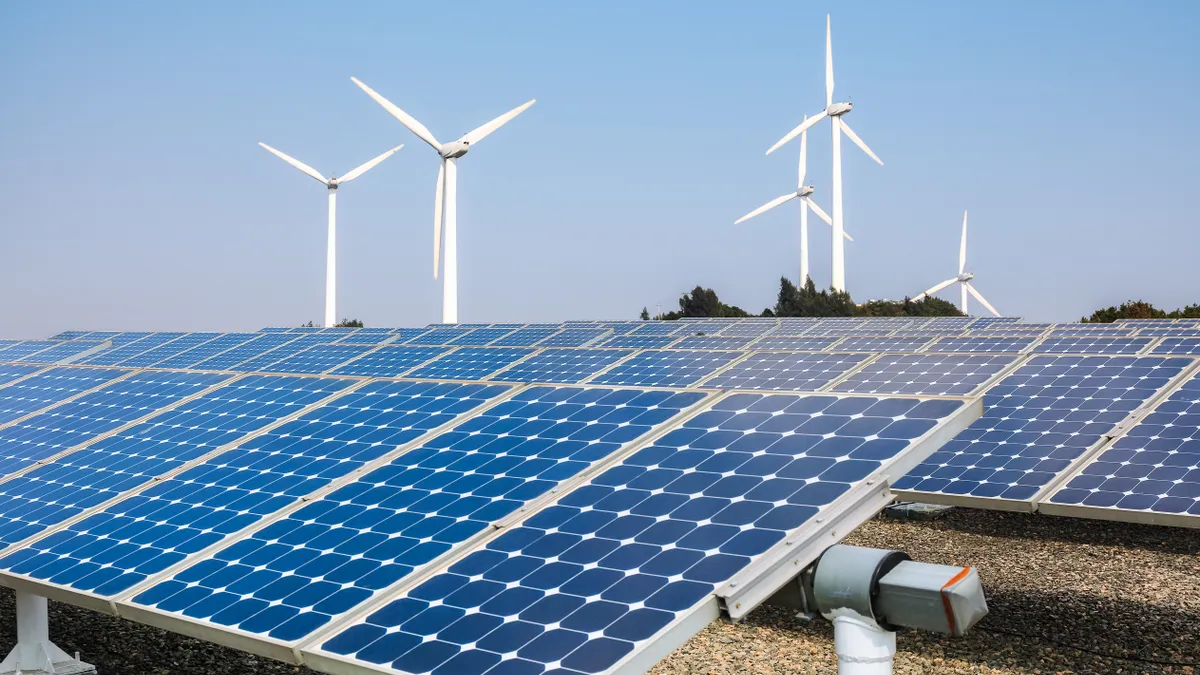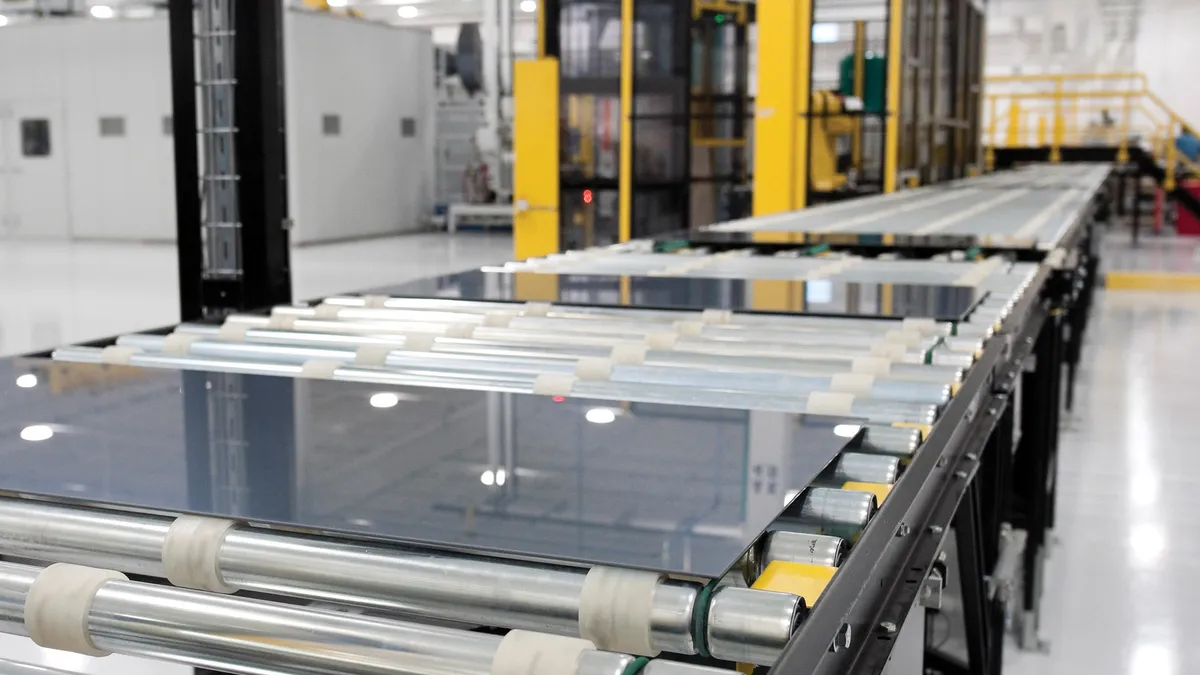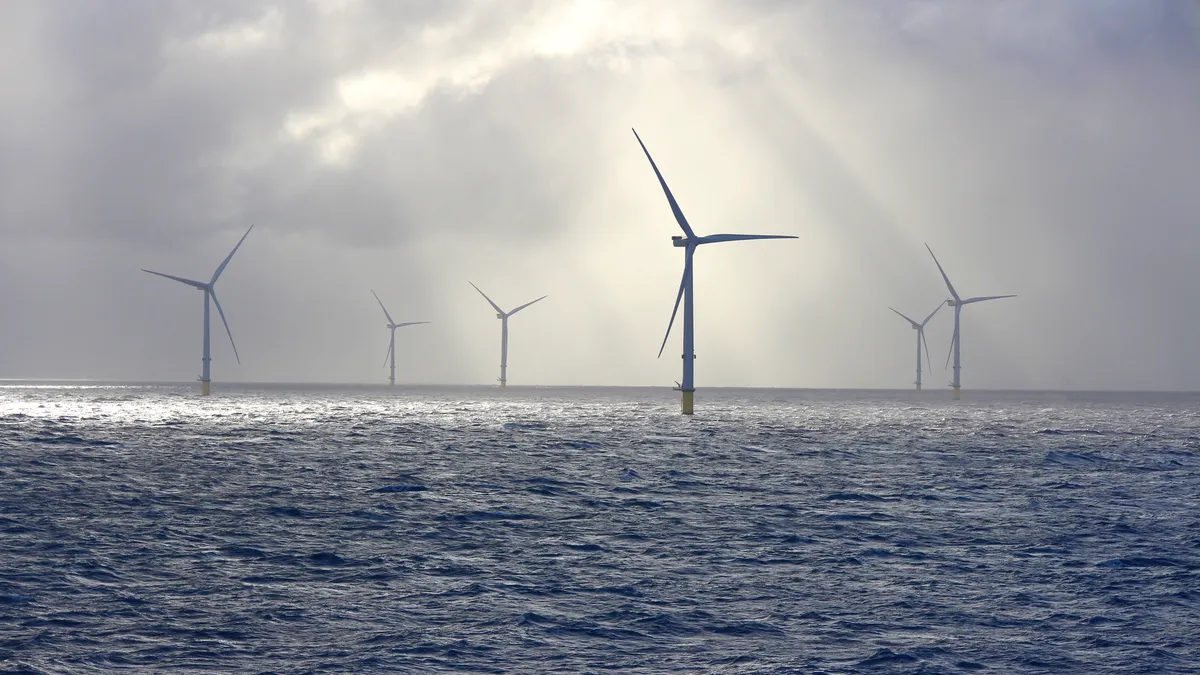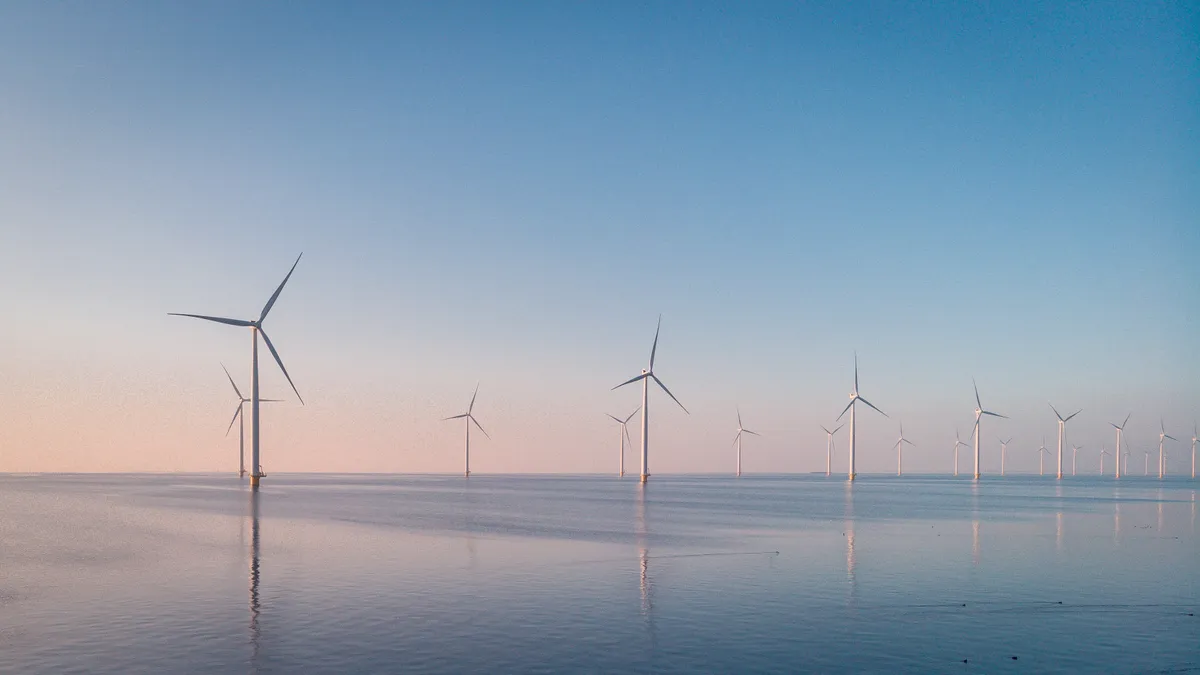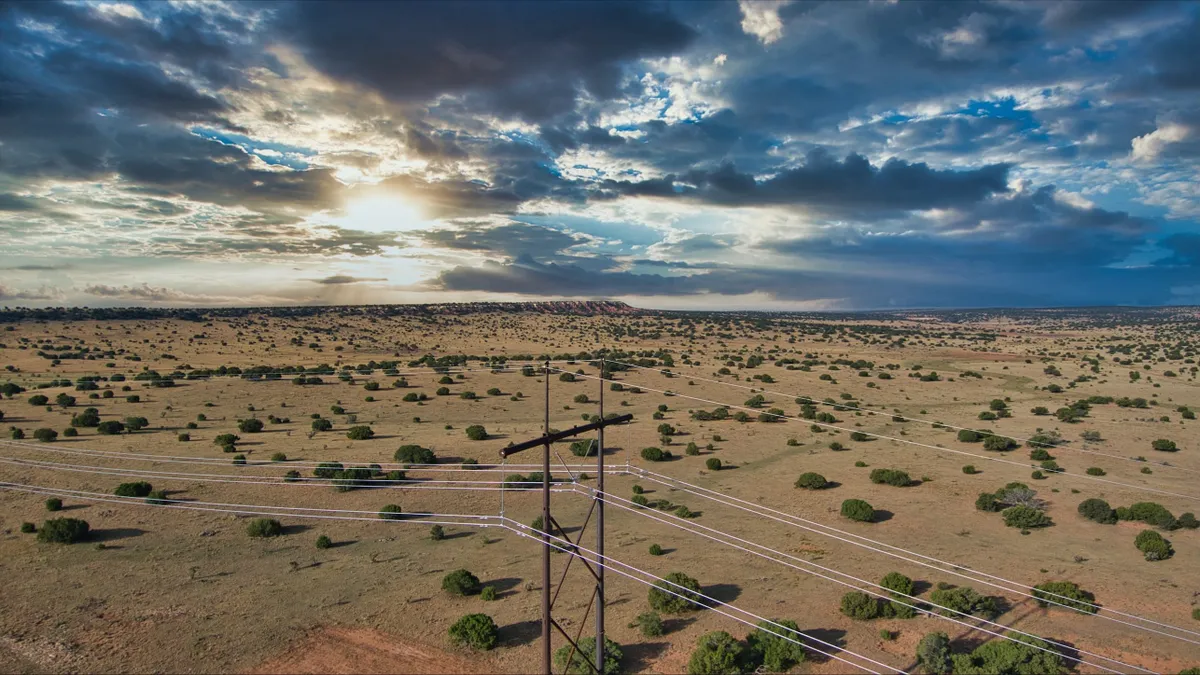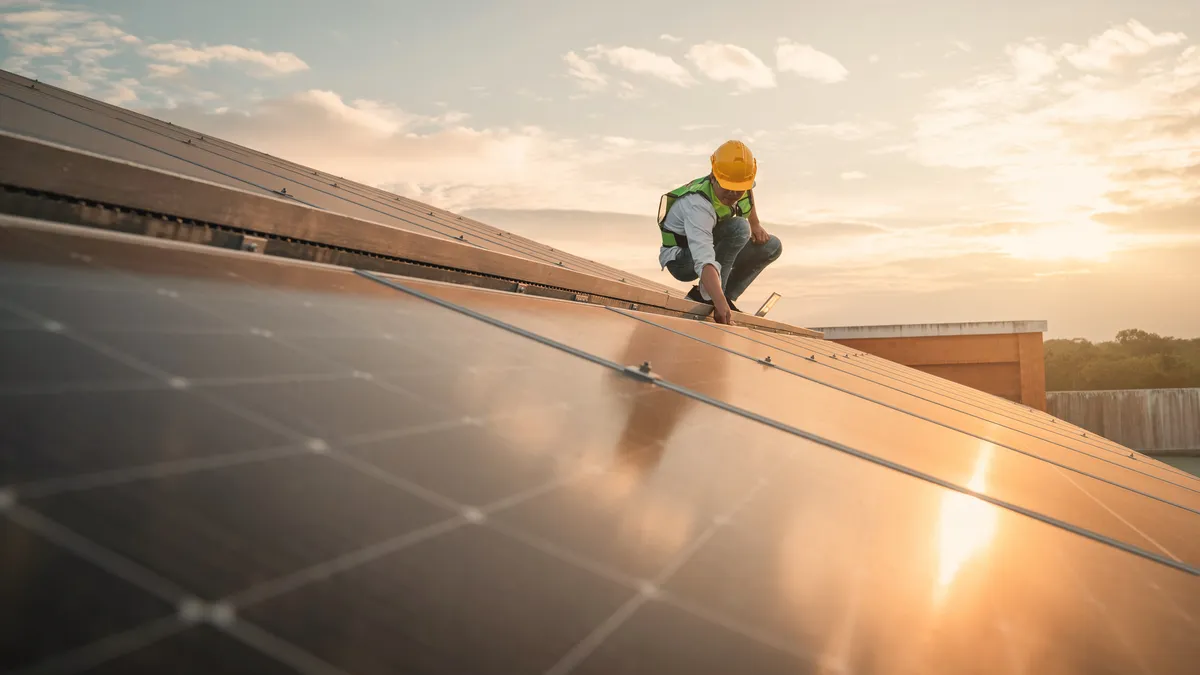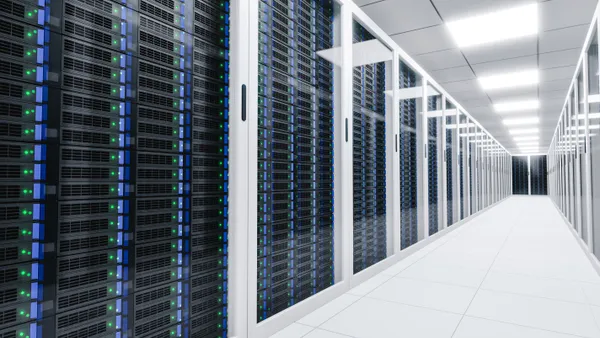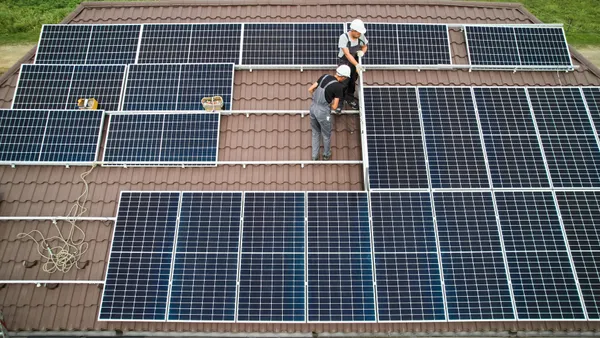It’s clear renewable energy is here to stay. Utilities are reporting higher penetration levels, states are boosting renewable energy standards and consumers show a growing appetite for wind and solar.
About 6.5% of the United States' energy came from wind and solar last year, and the number is expected to grow. States like California and Hawaii, for instance, have set ambitious renewable energy goals (50% by 2030 and 100% by 2045 respectively).
But increasing renewable energy on the grid comes with its own set of challenges as utilities are confronted with the need to smoothly merge intermittent generation onto the grid without disrupting service.
To achieve those goals, utilities are exploring more flexible ramping resources that would smooth the so-called duck curve, which happens when there is an overabundance of renewable energy on the system and low demand.
Two examples of utilities tackling the issue are Arizona Public Service Co. (APS) and Southern California Edison (SCE). Both companies are experiencing the consequences of high penetrations: the duck curve and negative pricing. Currently renewables compose roughly 25% of California's power mix; wind and solar make up about 6% of Arizona's mix.
APS and SCE spoke to Utility Dive about their efforts to more easily integrate renewable energy. Solutions include revamping demand response programs, rolling out electric vehicle pilots and rate design.
Arizona Public Service Co.
APS recently filed its Demand-Side Management Implementation Plan, introducing a slate of new efficiency and demand-side measures. These included incentives for smart thermostats, electric school buses, electric vehicle (and bus) charging infrastructure, energy storage and water heater timers.
Current APS programs will save customers 3.9 million MWh by the end of 2017, the utility estimates.
“At a global level, this 2018 plan continues to evolve to our resource needs what we have happening,” said Kent Walter, manager of customer technology and product development for APS. Those issues include “very steep ramps and varying pricing.”
If approved, the plan would take steps to address those challenges and align it with “those needs to partner with our customers and find mutual value.”
Water heater timers are one such method. An innocuous appliance, utilities have started eyeing them as a potential form of energy storage to craft a more flexible grid. Some of the biggest energy demands from residential customers is water usage in the morning, Walter said. Adding a rebate for water heaters and accompanying timers can spur customers to purchase them and, subsequently, help utilities align that demand to periods where solar generation saturates the grid and drives down prices below zero.
“A lot of that [morning demand] is water, so [the] water heater acts as thermal storage so that reduction period helps us integrate better and capture the value of negative pricing for our customers,” Walter said.
Another avenue is electric vehicles. Though still in nascent development in a handful of states, electric vehicles — and charging infrastructure — could solve two major challenges facing utilities. One, to reinvigorate demand after a prolonged period of stagnant load growth; and two, to help integrate renewable energy.
APS proposed a handful of EV pilot programs in its plan. One, to establish an EV charging network for non-residential customers that would allow APS to own and operate the equipment while establishing a demand response structure for it. Customers eligible for the pilot include commercial fleets, workplace charging stations and multi-family buildings. Only 90 participants will be selected.
Another pilot focuses on electric buses. The $2.25 million program would provide electric buses and charging infrastructure free for selected schools. The program itself is limited to four to five buses for now, but will give APS a potential tool to absorb the extra solar energy during the day and manage schools’ potential demand during peak hours.
“You think about a school bus: they come back in fall and winter and spring,” Walter said. “So they are adding load during [this period of time]... so they absorb solar during the day and manage their charging in peak window and by doing so, have minimum impact on the system.”
The utility also proposed a “reverse” demand response pilot project for customers with loads of 30 kW or more. The pilot aims to mitigate for negative pricing events caused by solar generation and the steep ramping that occurs as solar power declines.
In response, APS would give customers "free" power during negative pricing events, reducing the need to curtail solar generation.
The program gives APS “the ability to integrate more solar and the ability to reduce the steepness of ramp and the demand side management empower[s] more customers to manage their energy under our new rate structures including an on-peak period and peak demand response,” Walter said.
Southern California Edison
Southern California Edison is among the utilities at the forefront of the power sector transformation. Faced with ambitious renewable energy, climate and storage goals, SCE is currently testing and proposing a suite of pilot projects aimed at easing solar and wind integration.
Part of their toolbox includes proposals for electric vehicle pilot programs. SCE is targeting a wide range of vehicle types. One pilot program in particular combines mid-range commercial and heavy duty electric vehicles and testing rate designs.
The 10-year program will help expand EV fleets in the C&I space, including forklifts and yard hoppers. But since the market is still nascent, SCE proposed a rate design that would waive demand charges for the first 5 years in exchange for a flat energy rate.
For example, “when you have one or two buses, it’s hard to deal with demand charges,” said Laura Ranger, principle manager of air and climate policy for SCE. For SCE’s purposes, demand charges typically charge customers for monthly peak usage. With only a small fleet, utilizing demand charges could deter customers from growing EV fleets, said Ranger.
So, after conversing with the C&I customers in SCE’s territory, the utility found a solution. In order to please those customers, SCE would waive the demand charges for the first five years, and then gradually phase them in until they reach the full peak value, said Rob Thomas from SCE.
“The reason that we picked the first five years we saw that customers, they tend to have poor utilization factors of electricity so they have relatively high peak,” Thomas said.
Demand charges, once completely phased in, will compose 60% of the total rate (roughly $9.48/kW), while the flat energy rate is 40%, Thomas said.
The program is currently being submitted in an application to the California Public Utilities Commission. It remains to be seen how regulators from both states will view these projects, but it’s clear that utilities are eyeing a future with more renewable energy and consumer options.


